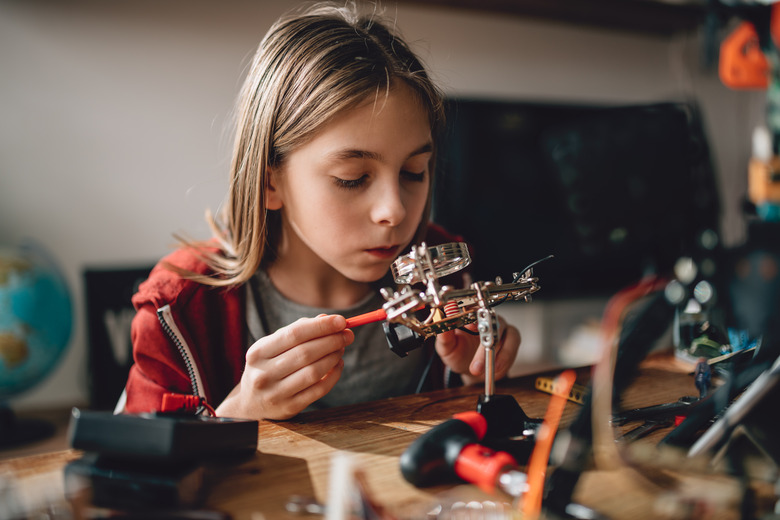Rube Goldberg Project Ideas
Rube Goldberg was an engineer-turned-cartoonist famed for depicting complex, over-wrought contraptions. These machines are the opposite of efficient: they employ far more steps than necessary to perform simple functions — for example, moving a ball from one spot to another through series of undulating ramps and winding channels.
Although the elaborate construction of Rube Goldberg machines makes them poor candidates for industrial and manufacturing applications in the real world, students can use Rube Goldberg projects to learn and demonstrate common concepts in engineering, physics and other scientific disciplines, such as decision-making and cause-and-effect. Students from the elementary-school level though the end of high school can select projects from a variety of scientific areas that range from the most basic to the highly ambitious.
Elementary-School Project: Chain Reaction
Elementary-School Project: Chain Reaction
Gather a range of supplies, including objects that roll like balls, marbles, roller skates and toy cars; Items that move like dominoes, unplugged toasters and non-dangerous objects with springs or fans; Ramps from toy train tracks, books, trays and plastic tubing, and household materials like bowls, tape, rulers, balloons, popsicle sticks, paste or glue. Each child can assemble his or her own into a chain-reaction scheme in the manner of the old Hasbro board game favorite, "Mousetrap."
Allow kids to build whatever they like, but ensure they focus on cause and effect and reproducibility, which means kids should understand why their machine works as it does. At this level of cognitive development, it is probably best to stay away from levers and pulleys, although more precocious students might have a hidden flair for integrating these into their projects.
Middle-School Project: Emphasize Planning and Teamwork
Middle-School Project: Emphasize Planning and Teamwork
At this grade level, rather than have kids follow their whims to create Rube Goldberg machines for their projects, instruct them to first make a plan of what they wish to build. Explain the concept of engineering blueprints to them, along with the fact that real engineers rely on just these sorts of detailed schematics to craft their machines.
Divide students into teams of three, and give them pencils and paper, glue, construction paper, marbles, paper cups, paper-towel tubes, string or twine, large paper clips, rubber bands and PVC pipe. Have them spend 20 to 25 minutes planning and sketching a way to solve a typical Rube Goldberg problem, such as getting a marble across a gap between tables. Make certain all children get a chance to participate, both in the construction process and in demonstrating the results to the class.
High-School Project: Constrained Problems
High-School Project: Constrained Problems
At this level, in addition to asking students to create a formal blueprint for Rube Goldberg projects, challenge students to stay within certain guidelines before proceeding. For example, require that their Rube Goldberg project contain a certain number of steps, at least six or more; Ensure it carries out a specific task (for example, pop a balloon, fill a bottle, or launch a small projectile) and make certain it remains within a strict time frame (say, a minimum of 10 seconds to a maximum of 5 minutes). Have students prepare detailed, but easy-to-understand posters, as used in science fairs that accompany their projects.
For these projects, instruct students to bring their own raw materials, although some of what they are likely to need may certainly be found in the school supply areas. They may also consult the Internet for inspiration, but discourage them from mimicking existing ideas too closely, and instead have them devise their own creative Rube Goldberg projects.
Cite This Article
MLA
Beck, Kevin. "Rube Goldberg Project Ideas" sciencing.com, https://www.sciencing.com/rube-goldberg-project-ideas-13710542/. 27 March 2018.
APA
Beck, Kevin. (2018, March 27). Rube Goldberg Project Ideas. sciencing.com. Retrieved from https://www.sciencing.com/rube-goldberg-project-ideas-13710542/
Chicago
Beck, Kevin. Rube Goldberg Project Ideas last modified March 24, 2022. https://www.sciencing.com/rube-goldberg-project-ideas-13710542/
